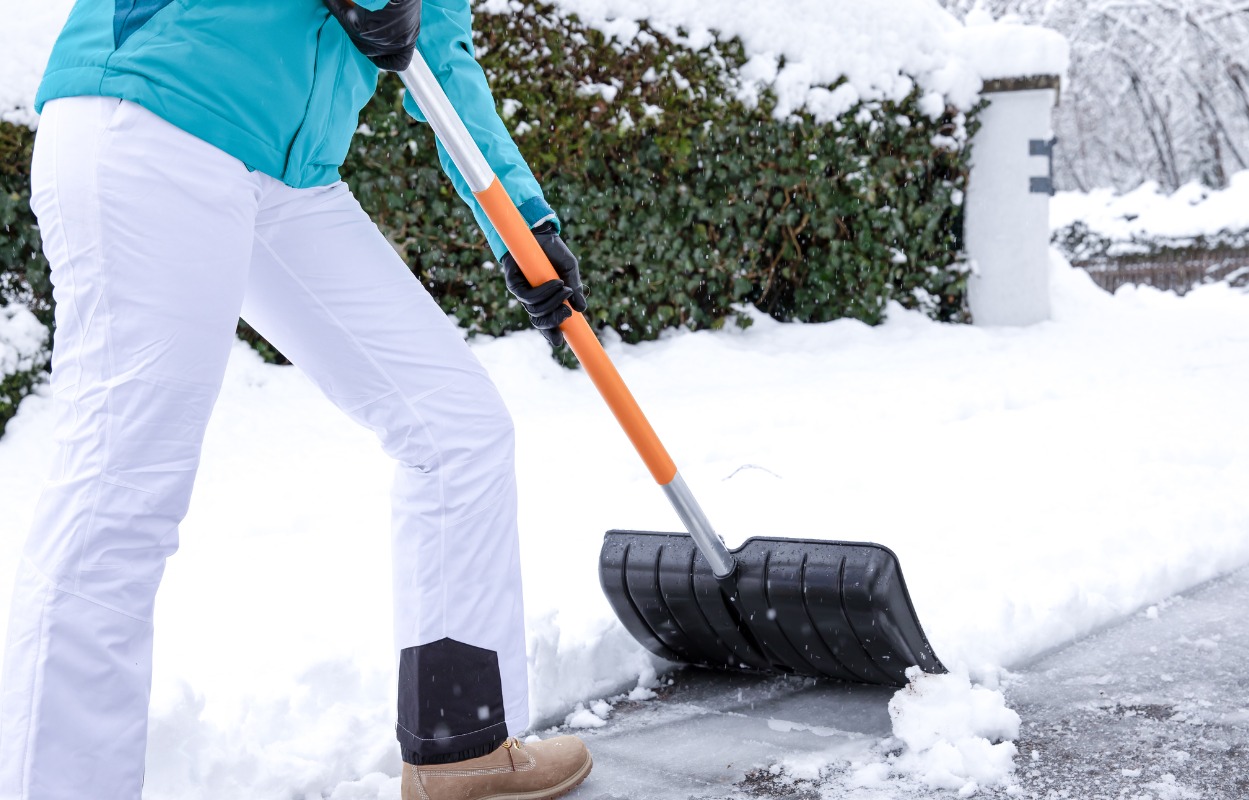As the weather gets colder, everyone starts preparing their home for the winter. During this time of year, the focus is on raking leaves, taking down outdoor decorations, storing machinery, cleaning up the garden, and other things around the yard. Activities such as these alone can be dangerous, causing thousands of people to end up in emergency rooms each year. However, once the snow starts accumulating, things get a bit stickier.
Snow Shoveling Injuries Are Very Common
Snow shoveling lands over 11,000 people in the hospital each year. Aside from hospitalizations, shoveling can cause sprains, strains, and overuse injuries which are commonly overlooked and can cause problems later down the road.
Shovels used to move snow are poorly designed. They often lack handgrips, are too short for most users, and are made out of material that is too heavy. This causes users to bend forward too much and place strain on the back when lifting. In addition, the shovels become even heavier with the added snow. If you do your own shoveling, consider buying a shovel made from plastic or lightweight aluminum. Make sure it’s long enough to reach the ground when your back is fully upright.
The mechanism used to shovel snow is also not ideal. Users tend to lean down, shovel the snow, and lift themselves up by their backs while simultaneously twisting their spines to toss the snow over their shoulders. This unnatural movement is an easy way to tweak the back and can result in strained muscles, sprained ligaments, or herniated discs.
Practice Safe Snow Shoveling
At the end of the day, the snow has got to go. To prevent injury and protect our backs, we should practice safe shoveling. We recommend practicing yoga or stretching to strengthen the spine and prepare it for the season. It’s never too early to start warming up the body. In fact, we should be stretching year-round.
Before you start shoveling, warm up the body with some light exercise and stretch out the main muscle groups, including the back. Make sure you’re wearing slip-resistant shoes when shoveling. A helpful tip is to spray nonstick cooking spray on the shovel to help the snow slide off easier.
The National Safety Council recommends not shoveling after eating or while smoking. Instead of lifting with your back, lift with your legs and keep your back flat. Rather than tossing the snow over your shoulder, which places strain on the back, turn the body towards the area you wish to dump it in. In fact, it’s better to push the snow rather than lifting it. If you’re going to lift it, use a shovel with a small head or only partially fill the shovel.
People with busy schedules tend to try to shovel the snow too quickly, working themselves to exhaustion and increasing their risk for injury. When shoveling snow, it’s important to take it slow and take frequent breaks. If you have an existing injury or only have a short time to devote to snow cleanup, abstain from shoveling this winter season. Consider getting a snowblower or hiring someone to help you clear your driveway. Your health is of the utmost importance.
If you have an injury that makes it difficult for you to do activities such as shovel snow, the last thing you should do is push through it. Take a break from the yard work and schedule a consultation with Dr. Greenberg. Our regenerative medicine clinic uses noninvasive therapies to heal injured joints, targeting the root of the problem rather than just its symptoms.




